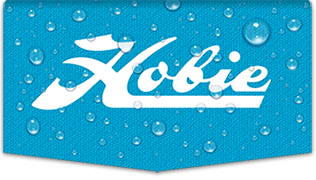Roadrunner wrote:
It wouldn't be too hard to pin the locking lever in the lock position or have an "L" pin drop down behind the lock lever when it locks. Of course, you'd have to pull or flip the pins to get the Drive out and be careful that they aren't in a position to gouge your feet.
I've been giving this some more thought and have a couple of possible solutions.
First, the strongest -- perhaps we should call it the "Twist N Lock".

This essentially blocks the locking lever from retracting by use of a stainless 1/4" x 20 cap screw. (Coincidentally, the very size and style that Hobie uses to secure the C & G units). This requires the permanent removal of the main Click N Go nylon cover to operate from the outboard side.
Here's a view of the cap screw in the lock position:

This shows the screw retracted, allowing the C & G to operate normally:

Simply give a quick twist to block the locking lever from retracting and reverse the process to free the lever. BTW, this lock works with any drumshaft, splined or not.
Tips:
1) Nick the last thread or two to prevent the cap screw from backing out too far and falling out. This stops it flush with the lever.
2) Use a little Teflon tape to operate smoothly without rattling or unwanted movement.
3) No need to drill your hole too close to the frame, or your cap screw may not clear the frame when contact is made against the drumshaft. But if you accidentally do, a small notch in the frame will correct it.
Disadvantage: The Nylon covers serve mainly a cosmetic purpose for most users, but they also limit the possibility of drumshaft drift. If you're one of the rare users who are talented enough to walk your drumshaft sideways like this:

you'd have to find another location. You may be able to mount the cap screw on the inboard side but access is limited and operation is awkward. After looking at all the options, the location chosen gives the quickest and easiest access. So far I've had no problems with the drumshafts with over 30 miles of pedaling and 3 different Drives, and no issues with the Nylon cover removed. Nevertheless it should be recognized as a possibility, especially with an older, well used Drive under the right circumstances.
For some, a second option may be more appealing. This was my first version and worked fine as well, though not as foolproof or neat. It has the advantage of not having to permanently remove the Nylon cover. In this version, a small hole is drilled through the top of the locking lever and nylon handle, and a stainless (or copper in this case) wire is used as shown here to make an eyelet for a hook and lanyard arrangement:

This is secured to the small built-in cleat at the front of the cockpit using a short piece of Spectra. Even under tension, the hook is quickly latched or released. The line poses no interference with your feet and may be stowed as shown here:


Caution: The over-center spring sweeps across the surface of the locking lever in its normal function. Be sure to drill your hole so that any wire passed through remains clear of the spring action. I drilled in the upper forward corner as illustrated by the purple dot (forgot to take a picture before closing up). This picture shows the proper spring position for the locking lever in the retract position:

There is a third option. This is the easiest and quickest, but also the weakest and most unreliable. It consists of drilling 2 holes in the nylon lever cap. The caution above applies.

I found this slower to connect and release with more difficulty maintaining tension. I could move the lever enough with my heel to release the Drive. It could be improved but still puts all the strain on the nylon handles which they are not designed for.
The cap screw method does require the use of a tap and die set, but is reasonably simple to construct. IMO, it is by far the best solution of those mentioned here for anyone who needs to lock the Click N Go.

P.S. The factory uses Loctite "Blue" thread locker to secure the Click N Go units. If you are removing them for any reason, it is essential that you use a thread locker on reassembly. They are removed with a 3/16 Allenhead wrench.














